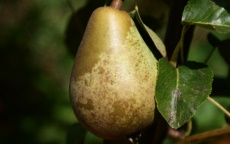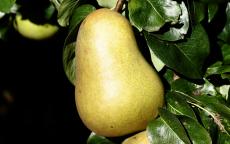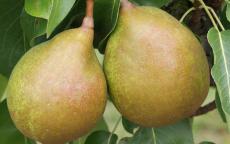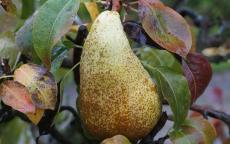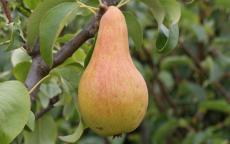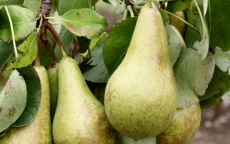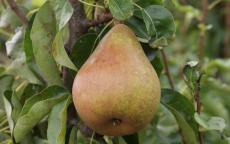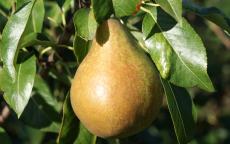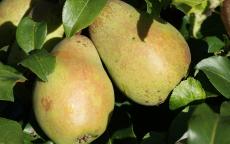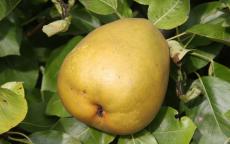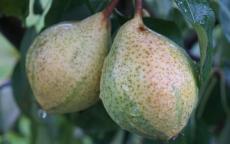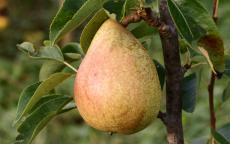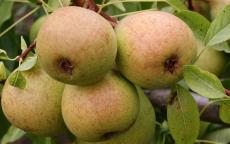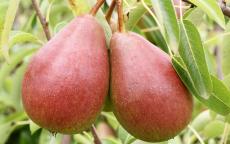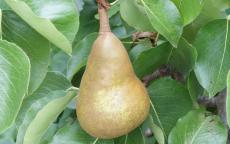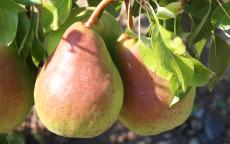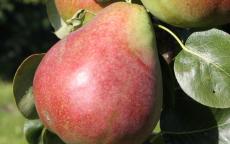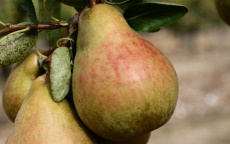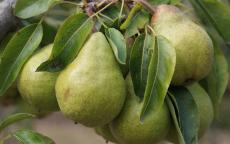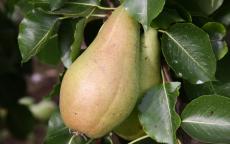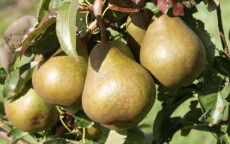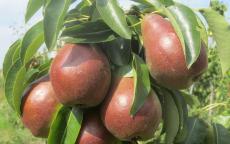- See also:
- Cooking pear trees2
- Perry pear trees3
Dessert pear trees
We have a range of pear trees, suitable for different climates and situations, and available in different mature heights.
Beth
An easy and reliable early-season pear, with a very good melting flavour.- Pick season: Early
- Self-fertile?: Not self-fertile
Beurre Hardy
A classic French pear with a very good flavour, but grows best in a warm sheltered situation.- Pick season: Late
- Self-fertile?: Not self-fertile
Beurre Superfin
A traditional French 19th century pear, widely considered one of the best for flavour.- Pick season: Late
- Self-fertile?: Partially self-fertile
Celebration NUVAR®
Nuvar Celeberation is a large modern dessert pear.- Pick season: Late
- Self-fertile?: Not self-fertile
Concorde
A marriage of Conference and Comice - Concorde is easy to grow, heavy crops, excellent flavour.- Pick season: Late
- Self-fertile?: Partially self-fertile
Conference
Conference is a popular and reliable English pear, well-suited to the UK climate.- Pick season: Mid
- Self-fertile?: Self-fertile
Doyenne du Comice
Doyenne du Comice is arguably the best flavoured of all pears.- Pick season: Late
- Self-fertile?: Not self-fertile
Fondante d'Automne
An old fashioned French pear with a notably sweet flavour.- Pick season: Late
- Self-fertile?: Not self-fertile
Glou Morceau
A traditional 18th century Belgian pear with a notably rich sweet flavour.- Pick season: Late
- Self-fertile?: Not self-fertile
Gorham
A reliable early 20th century American pear, with a sweet creamy flesh.- Pick season: Mid
- Self-fertile?: Self-fertile
Humbug
Humbug is an unusual pear variety, the fruits have distinctive green and yellow stripes.- Pick season: Late
- Self-fertile?: Not self-fertile
Invincible
Invincible is a high quality pear which can also cope with difficult conditions.- Pick season: Mid
- Self-fertile?: Partially self-fertile
Josephine de Malines
A classic 19th century winter pear with a high quality flavour.- Pick season: Very late
- Self-fertile?: Not self-fertile
Louise Bonne of Jersey
An attractive red-flushed French pear variety with sweet melting flesh.- Pick season: Mid
- Self-fertile?: Not self-fertile
Merton Pride
One of the best English pears, with a notably juicy buttery flesh.- Pick season: Mid
- Self-fertile?: Not self-fertile
Moonglow
A high quality early season dessert and culinary pear, very resistant to fireblight.- Pick season: Early
- Self-fertile?: Not self-fertile
Obelisk®
A useful dwarf pear tree for small gardens, it grows with a tidy upright habit and is self-fertile.- Pick season: Late
- Self-fertile?: Self-fertile
Onward
Onward is high quality dessert pear, related to Doyenne du Comice but easier to grow.- Pick season: Mid
- Self-fertile?: Not self-fertile
Packham's Triumph
Perhaps the best known Australian pear, producing large quantities of small but sweet-flavoured pears.- Pick season: Late
- Self-fertile?: Not self-fertile
Pitmaston Duchess
Pitmaston Duchess is a traditional English dual-purpose, noted for the very large size of its pears.- Pick season: Late
- Self-fertile?: Not self-fertile
Santa Claus
As the name suggests, Santa Claus is a late ripening dessert pear which keeps until Christmas.- Pick season: Very late
- Self-fertile?: Not self-fertile
Sensation
A red-coloured sport of the popular Williams pear, with a similar good flavour.- Pick season: Early
- Self-fertile?: Not self-fertile
Williams
Williams is a classic English pear, also known as Bartlett, with good flavour and quite easy to grow.- Pick season: Early
- Self-fertile?: Partially self-fertile
How to choose Dessert pear trees
The modern dessert pear with its refined flavours and melting flesh evolved in the 19th century, and with some exceptions almost all the pears we know today were developed at that time.
Unlike apples, which often helpfully come away in the hand when they are ripe, if you let pears ripen on the tree you will find they are overripe inside. Instead pears need to be harvested before they are ripe - then ripened in a fruit bowl. This just takes practice, and after a few seasons you will soon know the tell-tale little signs that your pears are ready for picking.
Pages you viewed
- Dessert pear trees
Obelisk®

